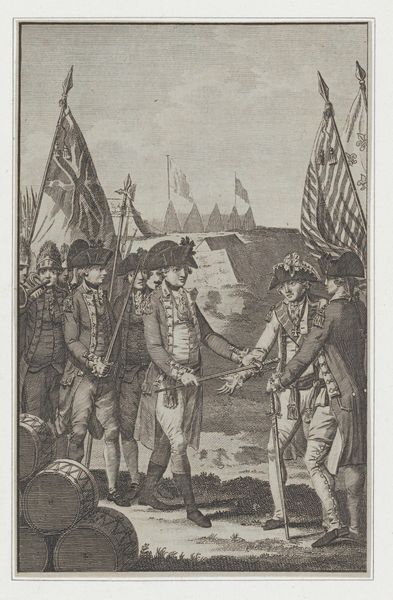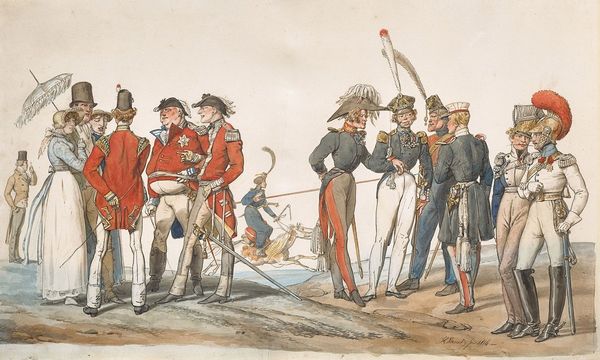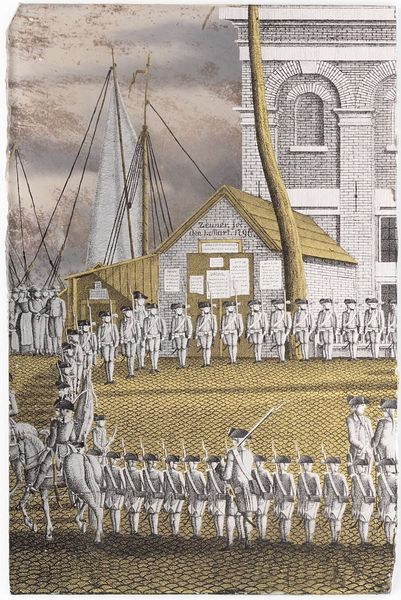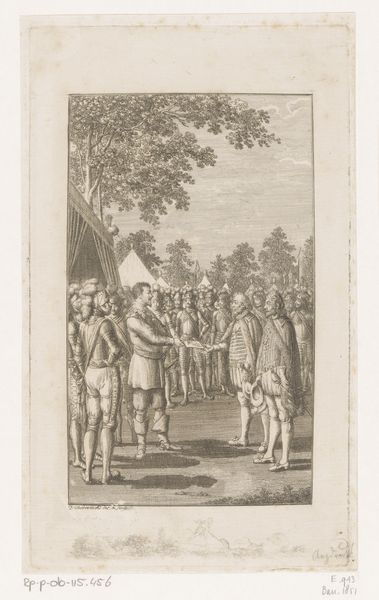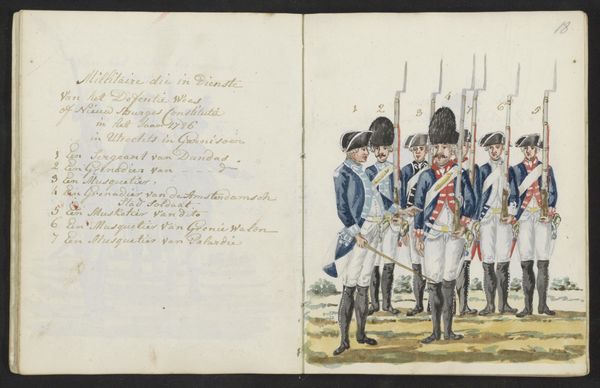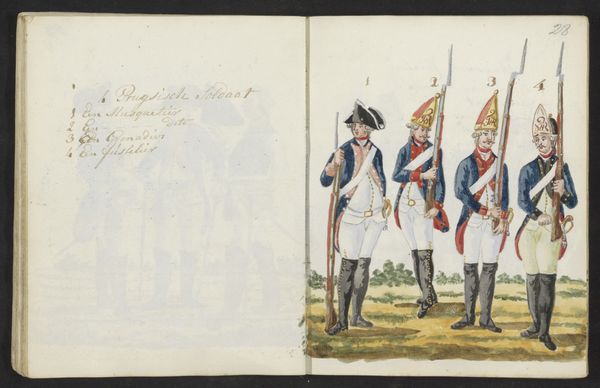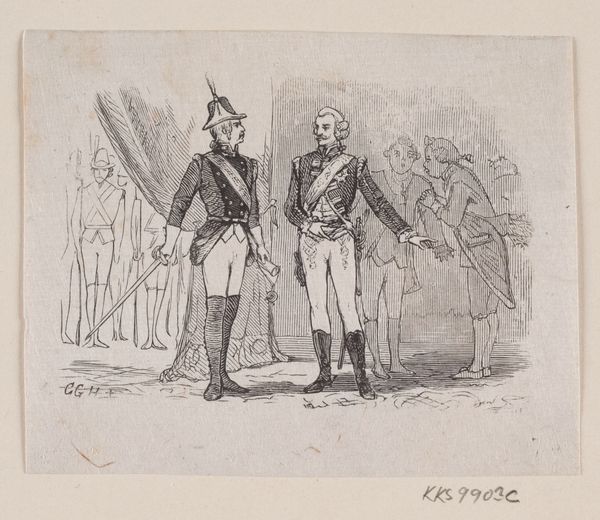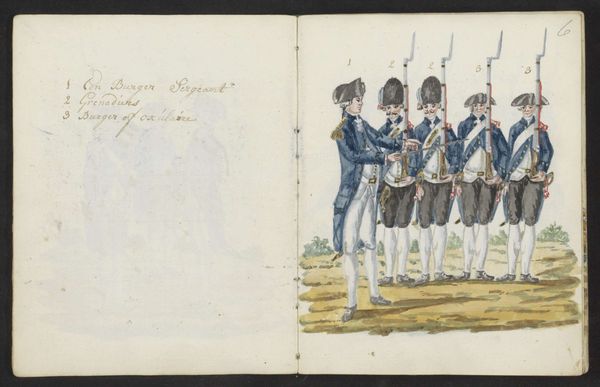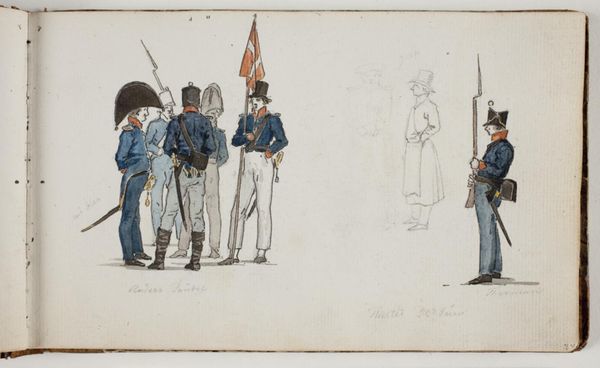
coloured-pencil, print
#
coloured-pencil
# print
#
coloured pencil
#
history-painting
Copyright: National Gallery of Art: CC0 1.0
Curator: This is Nathaniel Currier’s print, "Surrender of Cornwallis: At York-Town Va. Oct. 1781", created in 1845 using coloured pencil. It depicts a pivotal moment in American history. Editor: My immediate impression is one of formality, stiff figures, almost like actors on a stage. The stark colours feel intentionally dramatic, reinforcing the weighty narrative of defeat and transition of power. Curator: Absolutely. This image comes more than sixty years after the event, emerging during a surge of nationalist sentiment in the mid-19th century. Prints like these were crucial in shaping collective memory and perpetuating ideas of American exceptionalism. Note how the representation of George Washington emphasizes his authority. Editor: The colours emphasize the class divide present on either side: Washington in commanding blues facing down the defeated British in vibrant reds. Thinking about materials, this colored print would have been much more widely distributed and affordable than an oil painting, reaching a broader audience and influencing public perceptions of this historical narrative. Curator: And those perceptions were complex. Consider how this image idealizes a moment of victory while overlooking the lived realities of enslaved people and Indigenous communities who were also deeply impacted by this very revolution. How does this moment of American triumph play into wider power structures and social hierarchies? Editor: That’s where things get complicated, because this is also about material gain—control of resources, land, and labor. I am particularly interested in what message this piece had for its audience in 1845 in New York: where was this printed, who printed it, and who consumed it? Curator: Precisely. We must contextualize such artworks within broader frameworks of identity, race, and the politics of historical representation. Currier's print offers a sanitized, almost theatrical representation that omits crucial elements. Editor: It’s important to consider the layers of labor involved in producing and consuming such imagery—from the initial artistry to its eventual distribution and impact on public thought. The making of an idea about America is here inextricably linked to the materials used to circulate this image and the conditions under which these materials were created and used. Curator: By unpacking the narratives these artworks reinforce and the histories they often erase, we can develop a far richer, more complex appreciation. Editor: It’s about acknowledging the complicated reality beneath the triumphant facade, reminding us of how material conditions enable certain stories to be told and circulated, while others remain untold.
Comments
No comments
Be the first to comment and join the conversation on the ultimate creative platform.
